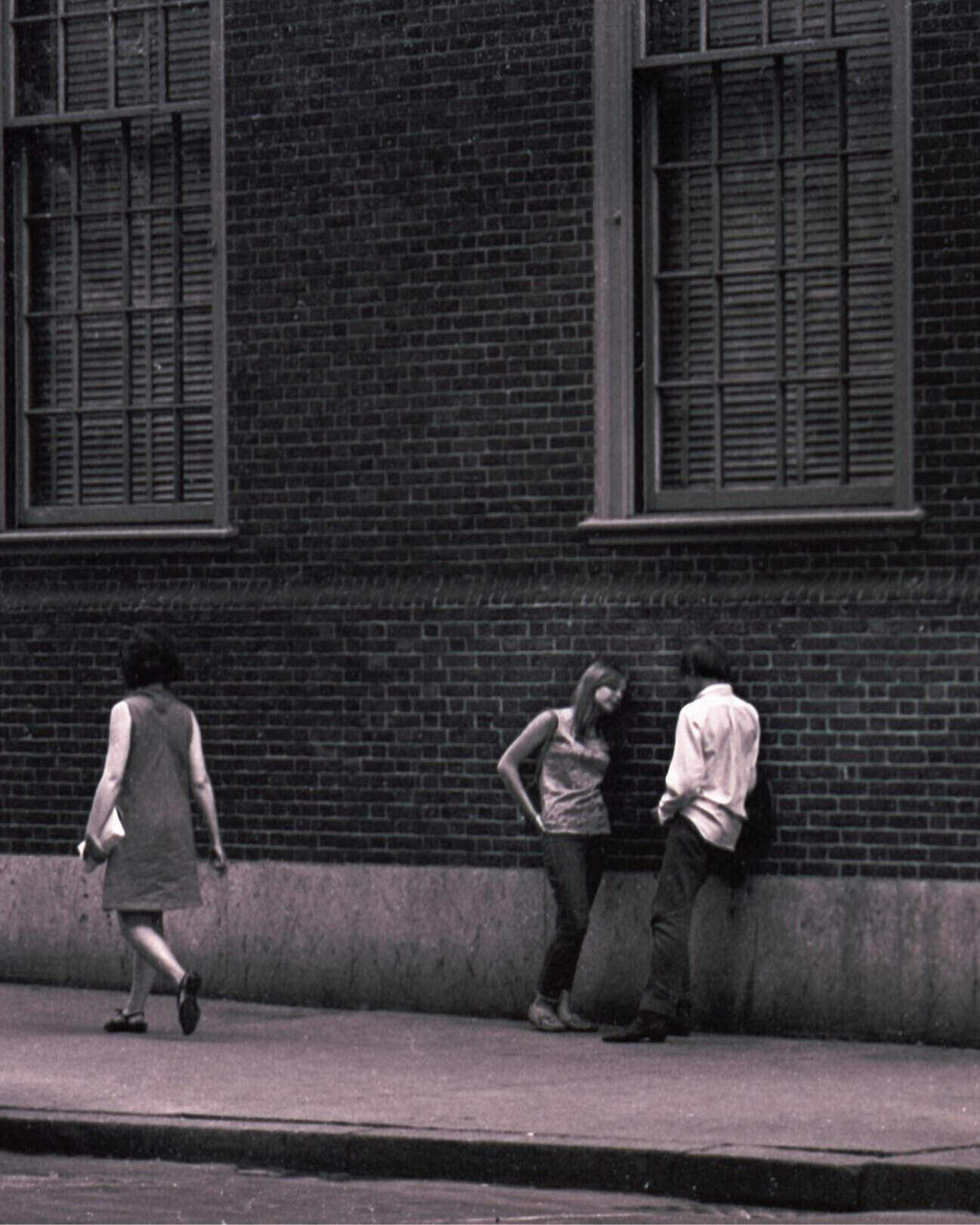Photographs
Around 1959 my father taught me how to develop and print black and white film in a small darkroom he had set up in the downstairs bathroom of our home in the Hudson River Valley. The magic of the emerging image was just that. I still love the smell of those chemicals, though I seldom get to enjoy them much in this digital age.
I worked as a cinematographer and continued taking photographs in both my professional and private life. The photographs I collected for this site come from many scattered parts of that life, and the many places it brought me. That family home on South Mountain Road that contained the first darkroom was a source of photographs over many years, especially after I had moved away and would visit countless times. One of the first discoveries I made after heading out into the world was what a special and beautiful place I had grown up in. Other photographs come from the years living in the East Village from 1967 until 1972, when I moved to Hollywood and began working in the movie business. The next 38 years were spent in ten different homes in the Los Angeles area, beginning with the fabulous Hollywood Hawaiian Hotel perched just above Hollywood Blvd at the Corner of Yucca Street and Grace Ave. A few years after we left there, Warren Zevon recorded a wonderful song about the place called “Desperados Under the Eaves”.
Just up the street was 1959 Grace Ave and home #2, one of those great Hollywood apartment houses with three floors of 50’s era apartments surrounding a kidney-shaped swimming pool. After a brief stay at 2009 N Bronson Ave within sight of the Hollywood Sign, it was off to Matilija Avenue in Sherman Oaks. It was 75 feet from the Los Angeles river, the first river I had seen encased in walls of concrete. A few feet beyond the river was the Ventura Freeway, which over time began to sound like the ocean to us. Then it was back to beneath the Hollywood Sign on the upper reaches of Gower Street and the first of several house I was to share with Becky, who by some miracle is still sharing a home with me today. Sayre Lane, Redcliff Street (where we married), and Manzanita Street (the first house we actually owned), all in the Silver Lake and Los Feliz neighborhoods, was followed by 157 South Citrus Ave, a lovely little 1940’s stucco home in Hancock Park where our three sons were born. In 1992 we moved to Sycamore Road in the Rustic Canyon Santa Monica Paradise, and remained there until 2010 when we returned East, to Portland, Maine.
Sycamore Road is the source of many photographs here, especially the amazing Beach just a few minutes walk from our doorstep as well as the cliffs along the shore there. When I began using a digital camera, a tormented transformation that continues, I began the practice of photographing while driving, much to the frustration of family members if any happened to be with me. I am always very careful about it, but I can appreciate the unease it creates for them. It became an important source of photographs. I love being transported through scene after scene at 60 feet a second, bringing new subjects and backgrounds at you faster than you can take them in, while at the same time, those moments are so fleeting, it’s rare to capture it properly. By necessity, there is tremendous luck involved, you’re shooting largely blind, since your real attention is spent driving. I have good peripheral vision. While I lived in New York in the late 60’s, I walked the streets with a camera in somewhat the same process as the later driving, just slower, step by step, block by block, cross town, uptown, downtown. And each photo cost money, making choices more deliberate. In those days, I felt very little unease about photographing people on the street, which is regrettably not the case any more. I remember only twice when I felt I was intruding. Once was photographing some men at a Bocce court in lower Manhattan, and I noticed a chap give his buddy a nudge and a nod toward me, and the two of them leaned back just a little as they watched the game, hiding their faces. The other time was when a Hasidic fellow brandished a butcher knife at me in front of his shop on Orchard Street for trying to steal his sole. My bad.
Of course many of the best photographs involve some level of intrusion into peoples’ lives, though hopefully no harm. One of my favorite pictures I made I’ve called “The Good-Bye Wall (1969)” of a young couple talking, leaning against a brick wall in the West Village. To me it has always been a moment caught during a young girl’s heartfelt efforts to let a boy down easy and break up. It feels quite dramatic to me, and those moments are rare by any measure. Any city is a gold mine of people, their faces, and interactions with each other, not to mention the light and environment that surrounds them.
Light itself has always been the key, despite the importance of the subject of any image. If the light is not powerful, the image is not as likely to be. Infinite in variation the source of life itself, light is everything.
